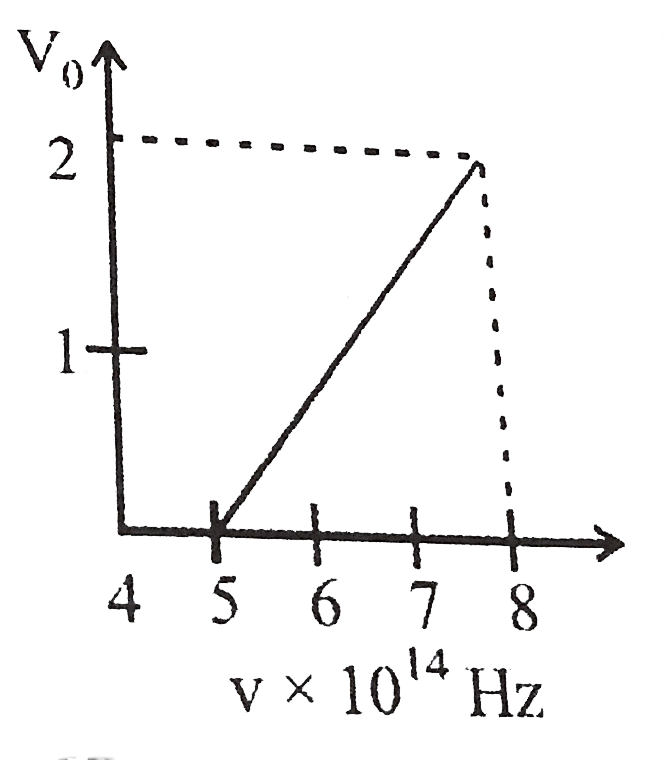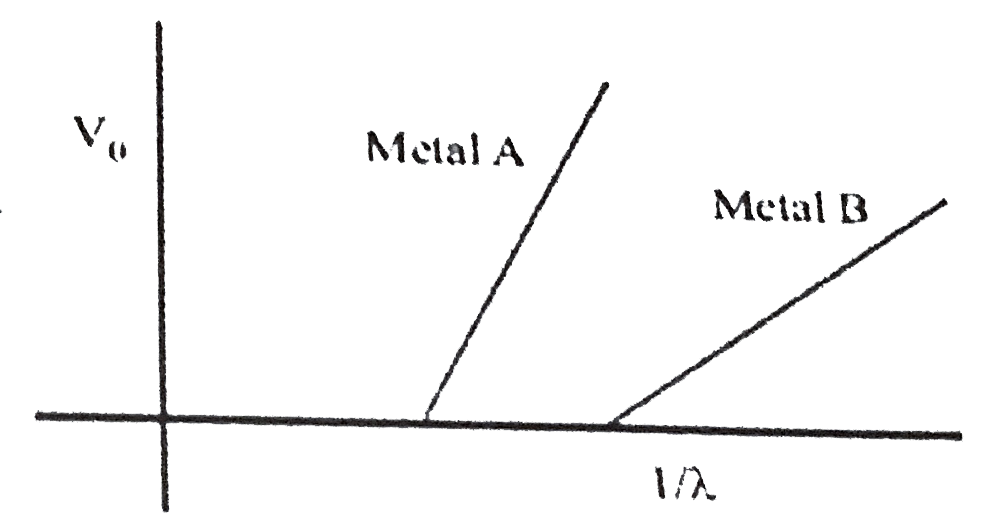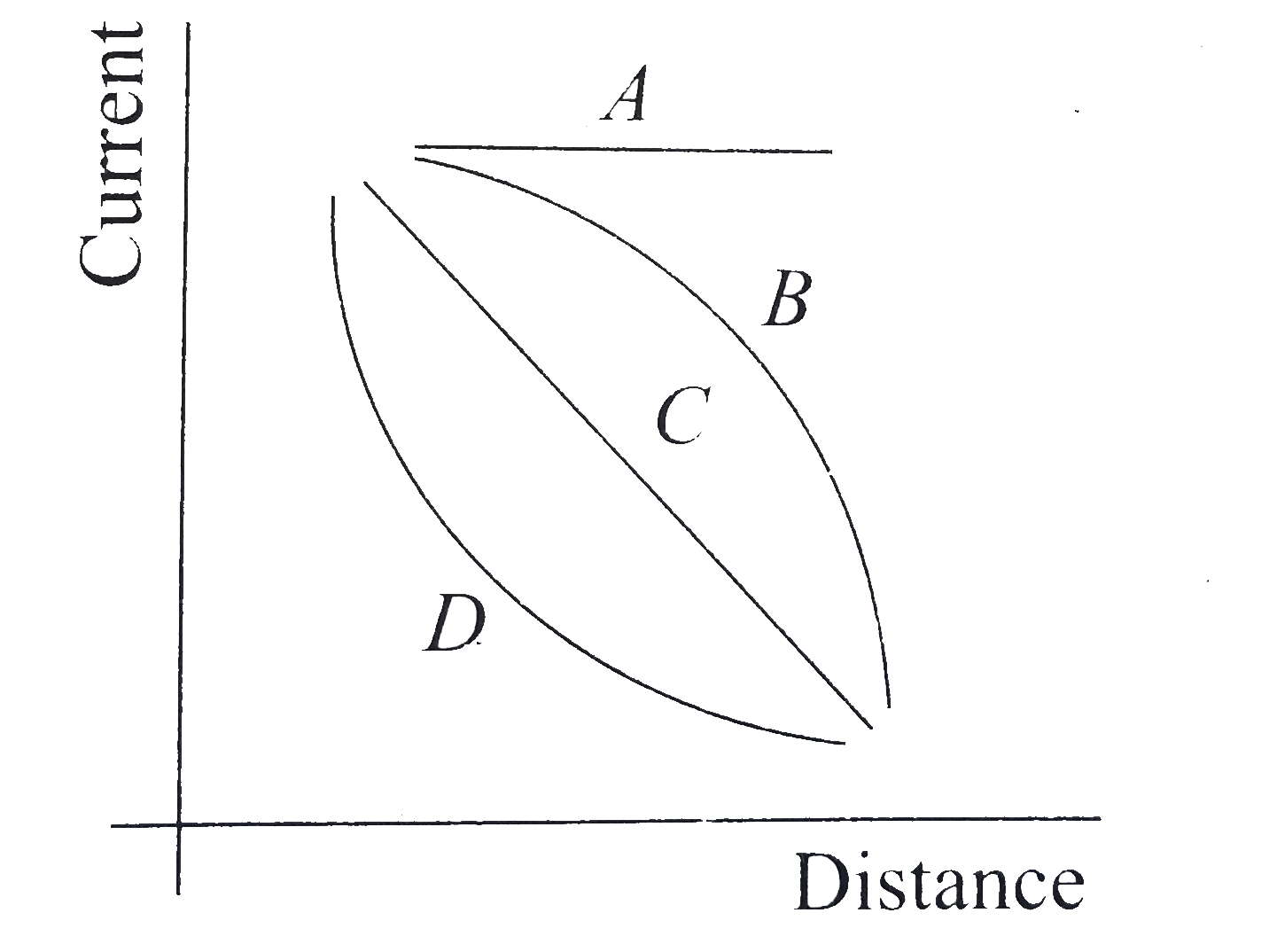Complete Solutions to EXERCISE -1 : CONCEPT BUILDER of chapter DUAL NATURE OF RADIATION AND MATTER of Class 12 book with complete answers and questions
| Class 12 | PHYSICS |
| Chapter | DUAL NATURE OF RADIATION AND MATTER |
| DISHA PUBLICATION | EXERCISE -1 : CONCEPT BUILDER |
| Number Of Questions | 60 |
| Academic Year | 2023-24 |
A particle with rest mass `m_0` is moving with velocity c. what is the de-Broglie wavelength associated with it?
View SolutionIf a proton and electron have the same de Broglie wavelength, then
View SolutionCathode rays and canal rays produced in a certain discharge tube are deflected in the same direction if
View SolutionThe magnitude of the de-Broglie wavelength `(lambda)` of an electron `(e)`,proton`(p)`,neutron `(n)` and `alpha` particle `(a)` all having the same energy of `Mev`, in the increasing order will follow the sequence:
View SolutionA steel ball of mass m is moving with a kinetic energy K. The de-Broglie wavelength associated with the ball is
View SolutionAn `alpha` -particle and a singly ionized `""_4Be^8` atom are accelerated through the same potential difference. Ratio of de-broglie wavelength-
View SolutionA particle of mass m is projected form ground with velocity u making angle `theta` with the vertical. The de Broglie wavelength of the particle at the highest point is
View SolutionWhich of the following figure represents the variation of particle momentum and the associated de - Broglie wavelength ?
View SolutionIf the kinetic energy of the particle is increased to `16` times its previous value , the percentage change in the de - Broglie wavelength of the particle is
View SolutionA proton accelerated through a potential difference of 100V, has de-Broglie wavelength `lamda_0` . The de-Broglie wavelength of an `alpha` -particle, accelerated through 800V is
View SolutionThe de-Broglie wavelength of neutron in thermal equilibrium at temperature T is
View SolutionA free particle with initial kinetic energy E, de-Broglie wavelength `lambda`, enters a region where in it has a potential V, what is the new de-Broglie wavelength?
View SolutionA proton has kinetic energy E = 100 keV which is equal to that of a photon. The wavelength of photon is `lamda_(2)` and that of proton is `lamda_(1)`. The ratio of `lamda_(2)//lamda_(1)` is proportional to
View SolutionThe de-Brogile wavelength of a neutron at `927^(@)`C is `lamda`. What will be its wavelength at `27^(@)`C?
View SolutionA proton and an `alpha`-particle are accelerated through same potential difference. Find the ratio of their de-Brogile wavelength.
View SolutionIf `E_(1) , E_(2) "and" E_(3)` represent respectively the kinetic energies of an electron , an alpha particle and a proton each having same de Broglie wavelength then :
View SolutionAn electron of mass `m` and charge `e` initially at rest gets accelerated by a constant electric field `E`. The rate of change of de-Broglie wavelength of this electron at time `t` ignoring relativistic effects is
View SolutionThe photoelectron emitted from a metal surface are such that their velocity
View SolutionLight of a particular frequency v is incident on a metal surface. When the intensity of incident radiation is increased, the photoelectric current
View SolutionEinstein's photoelectric equation is `E_k = hv - phi` . In this equation `E_k` refers to
View SolutionLight of wavelength 3500Å is incident on two metals A and B whose work functions are 3.2 eV and 1.9 eV respectively. Which metal will emit photoelectrons
View SolutionThe photoelectric work function for a metal surface is `4.125 eV`. The cut - off wavelength for this surface is
View SolutionWhen ultraviolet lightofenergy6.2 eV incidents on a aluminimum surface, it emits photoelectrons. If work function for aluminium surface is 4.2 eV, then kinetic energy of emitted electrons is
View SolutionThe threshold frequency for a metallic surface corresponds to an energy of `6.2eV` and the stopping potential for a radiation incident on this surface is `5 V` . The incident radiation lies in
View SolutionIn a photoelectric experiment the stopping potential for the incident light of wavelength 4000Å is 2 volt. If the wavelength be changed to 3000 Å, the stopping potential will be
View SolutionIn photoelectric effect, stopping potential for a light of frequency `n_(1)` is `V_(1)`. If light is replaced by another having a frequency `n_(2)` then its stopping potential will be
View SolutionWhich metal will be suitable for a photo electric cell using light of wavelength 4000 Å. The work functions of sodium and copper are respectively 2.0 eV and 4.0 eV.
View SolutionRadiations of two photon’s energy, twice and ten times the work function of metal are incident on the metal surface successsively. The ratio of maximum velocities of photoelectrons emitted in two cases is
View SolutionA small photocell is placed at a distance of 4 m from a photosensitive surface. When light falls on the surface the current is 5 mA. If the distance of cell is decreased to 1 m, the current will become
View SolutionIn a photoelectric effect experiment, for radiation with frequency `v_0` with `hv_0` = 8eV, electrons are emitted with energy 2 eV. What is the energy of the electrons emitted for incoming radiation of frequency 1.25 `v_0`?
View SolutionWhich one of the following graphs represents the variation of maximum kinetic energy `(E_K)` of the emitted electrons with frequency u in photoelectric effect correctly ?
View SolutionA source of light is placed at a distance of 50 cm from a photocell and the stopping potential is found to be `V_0` . If the distance between the light source and photocell is made 25 cm, the new stopping potential will be
View SolutionThe stopping potential `(V_(0))` versus frequency (v) plot of a substance is shown in figure, the threshold wavelength is

View SolutionThe work functions of metals `A` and `B` are in the ratio `1 : 2`. If light of frequencies `f` and `2 f` are incident on the surfaces of `A` and `B` respectively , the ratio of the maximum kinetic energy of photoelectrons emitted is ( `f` is greater than threshold frequency of `A , 2f` is greater than threshold frequency of `B`)
View SolutionWhen a metal surface is illuminated by light wavelengths `400 nm` and `250 nm` , the maximum velocities of the photoelectrons ejected are `upsilon` and `2 v` respectively . The work function of the metal is
`( h = "Planck's constant" , c = "velocity of light in air" )`
View SolutionIn a photoelectric experiment, with light of wavelength `lamda` , the fastest electron has speed v. If the exciting wavelength is changed to `5lamda/4` , the speed of the fastest emitted electron will become
View SolutionTwo identical photocathodes receive light of frequencies `f_1` and `f_2`. If the velocities of the photo electrons (of mass m ) coming out are respectively `v_1` and `v_2` then
View SolutionIn a photoelectric effect measurement, the stoppingg potential for a given metal is found to be `V_(0)` volt, when radiation of wavelength `lamda_(0)` is used. If radiation of wavelength `2lamda_(0)` is used with the same metal, then the stopping potential (in V) will be
View SolutionA photo cell is illuminated by a small bright source placed 1m away When the same source of light is placed 2m away, the electrons emitted by photo cathode
View SolutionFor intensity `I` of a light of wavelength `5000 Å` the photoelectron saturation current is `0.40 mu A` and stopping potential is `1.36 V` , the work function of metal is
View SolutionThe maximum velocity of the photoelectrons emitted from the surface is v when light of frequency n falls on a metal surface. If the incident frequency is increased to 3n, the maximum velocity of the ejected photoelectrons will be:
View SolutionIn an experiment on photoelectric effect, a student plots stopping potential `V_(0)` against reciprocal of the wavelength `lamda` of the incident light for two different metals A and B. These are shown in the figure

Looking at the graphs, you can most appropriately say that :
View Solution
A point source causes photoelectric effect from a small metal plate. Which of the curves in Fig. may represent the saturation photo-current as a function of the distance between the source and the metal?
View SolutionIn a photoelectric experiment, the wavelength of the incident light is decreased from `6000A` to `4000A`. While the intensity of radiations remains the same,
View SolutionWhen a point light source, of power `W`, emitting monochromatic light of wavelength `lambda` is kept at a distance `a` from a small photosensitive surface of work function `phi` and area `S`. Then
View SolutionFind the number of photons emitted per second by a 25 W source of monochromatic light of wavelength `6600 Å`. What is the photoelectric current assuming 3% efficiency for photoelectric effect. Given `h = 6.6 xx 10^(-34) Js`.
View SolutionX-rays are
View SolutionThe ratio of the energy of an X - ray photon of wavelength 1 Å to that of visible light of wavelength 5000 Å is
View SolutionX-ray beam can be deflected
View SolutionWhite X-rays are called 'white' due to the fact that:
View SolutionX-rays are used to irradiate sodium and copper surfaces in two separate experiments and stopping potential are determined. The stopping potential is
View SolutionThe intensity (I) of X-rays after traversing a distance x through a matter is related to the coefficient of absorption (`mu`) of the material as
View SolutionWhen the minimum wavelength of X-rays is 2Å then the applied potential difference between cathode and anticathode will be
View SolutionOn operating an X-ray tube at 1 kV. X-rays of minimum wavelength `6.22Å` are producd. I fht tube is operated at `10 kV`, then the minimum wavelength of `X`-rays prodcued will be
View SolutionThe X-rays of wavelength 0.5 A are scattered by a target. What will be the energy of incident X-rays, if these are scattered at an angle of `72^@` ?
View SolutionWhich one of the following statement is `WRONG` in the context of X- rays generated from X- rays tube ?
View SolutionThe potential difference applied to an X-ray tube is 5 kV and the current through it is 3.2 mA. Then the number of electros striking the target par second is
View SolutionAn X-ray tube is operated at 15 kV. Calculate the upper limit of the speed of the electrons striking the target.
View SolutionX- rays are produced in an X- rays tube operating at a given accelerating voltage . The wavelength of the continuous X- rays has values from
View SolutionAn X-ray tube with Cu target is operated at 25 kV. The glancing angle for a NaCl. Crystal for the Cu`k_alpha` line is `15.8^@` . Find the wavelength of this line.
View Solution
EXERCISE -1 : CONCEPT BUILDER questions and complete solutions for chapter DUAL NATURE OF RADIATION AND MATTER of DISHA PUBLICATION PHYSICS (HINGLISH) of Class 12